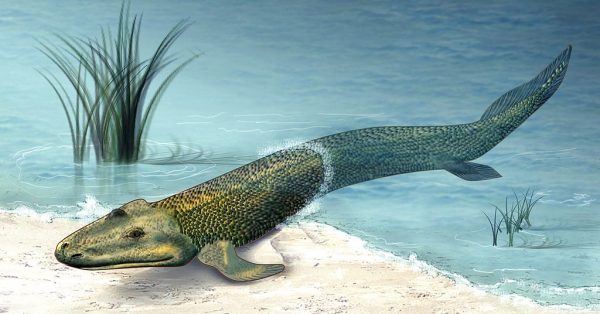
Skin’s Many Barriers And How Climate Change May Affect Them
Skin has many barriers: it keeps us waterproof, it holds back invading microorganisms, and it protects us from mechanical injury, from toxic rays of sunlight and foreign chemicals in our environment. Each of skin’s many barriers may be impacted as our environment changes as a result of global warming. To understand how skin will have to adapt to climate change we need to consider how these barrier’s work to keep us well.
The Skin’s Water Barrier Came First
Life on our planet began in its seas – a warm womb with a salinity that is close to that of a cell’s interior. But upon leaving the osmotic neutrality of the seas for life on land, our fish-like ancestors, the fishapods, suddenly would have encountered an entirely different world. There they faced a steep osmotic gradient between the much drier air outside and their water-based interior. They now required a water-proof covering to prevent the otherwise inevitable dehydration.
With that first step onto dry land – dawned a new evolutionary imperative, for them and for all their progeny who would follow. They required a means to prevent the loss of water from their cells into the arid atmosphere that now surrounded them.
Thus, before the grand experiment of terrestrial life could truly begin, this imperative – the need for a water barrier – had to be solved.
Indeed, all land dwelling species have had to evolve a water barrier on their external coverings (or ‘integuments’) – from the cuticles coating the leaves of plants, to the exoskeletons of insects, or to the scales of reptiles and to our human skin – in order to maintain their water-based way of life in a dry world.
Skin’s Many Barriers
Over time, the need for other types of protective barriers emerged: such as, for a barrier against infection by microorganisms, and for one against intrusion by foreign chemicals in the environment, such as toxins, free radicals and allergens, for a barrier against harmful rays of sunlight, and also for a barrier from mechanical injury. These needs were grafted onto the basic water barrier system already in place, such that, an understanding of the how the water barrier is constructed is essential to understanding how these other barriers are organized and maintained.
This concept that the water barrier is skin’s most critical function is useful when we consider how our skin is now being challenged by climate change.
Skin is THE environmental organ – it experiences everything that is happening in the external world.
The fact that we seldom think about our skin when we worry about the effects on our health of heat waves, or of pollution from wild fires, or of the emergence of tropical infectious diseases like dengue and Zika into our temperate climate, is a testament to how efficiently skin has constructed its barriers – how well it was designed by the forces of evolution to resist environmental assaults.
But skin does have its vulnerabilities. And an understanding of skin’s many barriers, especially our water barrier, can be the key to understanding just what these vulnerabilities may be.
For more on how the skin constructs its water barrier, see our posts on the Skin Barrier and why it matters or sign up to receive our free booklet, a Primer on the Skin Barrier. In future posts we’ll talk about specific barriers that are being challenged now by climate change and it’s fellow traveler, pollution.
Leave a Reply